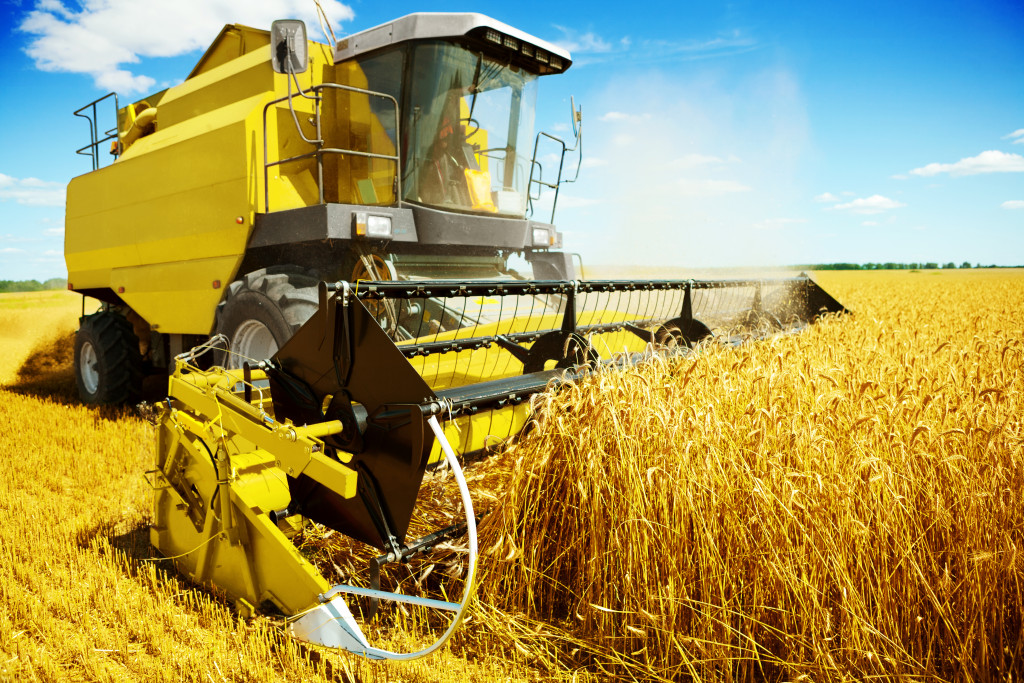- Soil testing and targeted fertilization can enhance crop yield and reduce the cost of excess fertilizers.
- High-quality equipment, like trailers and irrigation systems, streamline operations and increase productivity.
- Investing in quality harvesting equipment improves efficiency, reduces labor costs, and maximizes agricultural output.
- Organic pest control solutions, including beneficial insects and essential oils, are cost-effective, sustainable alternatives to traditional pesticides.
Farmers and livestock owners are always on the lookout for ways to improve the quality and quantity of their output. The agriculture and livestock industries are highly competitive, and it takes innovative and cost-effective solutions to remain successful in the long run.
Thankfully, advancing technological and scientific developments are making it possible to achieve better results without breaking the bank. This article explores some of the most practical and cost-effective solutions available to boost your agricultural and livestock output.
Soil Testing and Fertilization
The condition of the soil is the foundation of a successful harvest. Conducting soil tests can help identify nutrient deficiencies or imbalances, pH levels, and other planting conditions that affect your yield.
Once you have the test results, you can use targeted fertilizers to give your soil the right blend of nutrients and minerals. This ensures healthy and robust crops that yield high-quality produce. By doing this, you cut down on the cost of buying and using excess fertilizers.
In most cases, soil fertility can be restored or improved through the application of organic treatments like compost or manure. Organic solutions are generally more affordable than their conventional counterparts while still providing the same quality output.

Invest in Reliable Equipment and Machinery
Investing in reliable equipment and machinery is an indispensable part of achieving efficient, cost-effective agricultural and livestock production. While the initial outlay can be significant, the long-term benefits far outweigh the upfront costs. High-quality machinery enhances productivity by automating tasks, reducing labor costs, and ensuring precision in agricultural processes like sowing, watering, and harvesting. Here are some examples:
Livestock Trailers
A high-quality livestock trailer is an essential tool for anyone in the livestock business. These trailers allow for the safe and efficient transportation of animals from one location to another, whether it’s moving livestock to different pastures, to markets, or to veterinary facilities for healthcare.
Opting for a sturdy and well-ventilated trailer can reduce stress on the animals during transportation, ensuring their well-being, which in turn contributes to the overall productivity and profitability of your livestock business.
Irrigation Equipment
Installing quality irrigation systems is a great way to save on water costs while optimizing crop production. In addition, automatic irrigation systems require minimal maintenance and offer superior accuracy compared to manual watering methods.
Investing in advanced drip irrigation technology, for example, can reduce water usage by up to 50%. With such an efficient system, you can easily control and monitor the amount of water going to your crops, leading to better yields.
Harvesting Equipment
Harvesting equipment is another essential tool for any agricultural business. To maximize your output, you need quality machinery that can work quickly and accurately. Investing in a high-quality harvester or thresher can greatly improve your efficiency and reduce labor costs.

Organic Pest Control Solutions
Investing in organic pest control is an excellent way to reduce costs while keeping your crops healthy. Remember that pesticides tend to get expensive, and their frequent application can affect both your margins and crops’ health. In contrast, switching to organic alternatives is both cheaper and sustainable. Here are some examples:
Beneficial Insects
Introducing beneficial insects to your fields is an effective way to control or reduce pest populations. These insects feed on a variety of common pests, helping to reduce their numbers and minimize damage to crops.
Ladybugs, for example, are effective against aphids and some beetle species, while lacewings can help keep scale insect and whitefly populations in check. Incorporating these beneficial insects into your organic pest control plan is both cheap and efficient.
Natural Predators
Natural predators are another excellent way to keep pests under control. Common examples include frogs, lizards, and birds of prey that feed on pests or insect larvae. Investing in birdhouses can attract natural predators like birds of prey to your farm, helping to reduce pest populations and protect crops.
Essential Oils
Essential oils are an effective natural pesticide that helps keep pests away from your crops. They generally have a pleasant scent and can be used in small doses, making them ideal for organic farming applications. Plant-based essential oils like neem or cedarwood are especially effective against a wide range of common agricultural pests.
Increasing agricultural and livestock output can be challenging and pricey. But by adopting innovative, sustainable, and cost-effective solutions, farmers and ranchers can achieve better results without overstretching their budgets. From soil testing and fertilizer to precision technology and hay bale wrapping, you’re sure to find what works best for your farming operation. Start with the solutions highlighted above and enjoy the benefits of improved business bottom lines.

